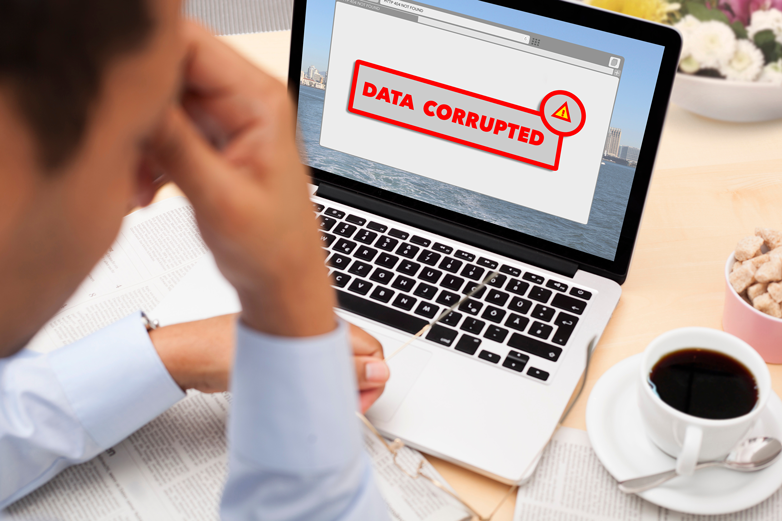Knowing how to fix a corrupted file can be a lifesaver. If your computer has ever crashed while saving a file, there’s a good chance that file could become corrupt. When this happens, an error message pops up, warning you that the program can’t open it. You might see something like, “The file is corrupt and cannot be opened,” or “The file or directory is corrupted and unreadable.” Many people panic when they encounter these alerts, fearing the file is lost forever. The good news? There are several ways to repair corrupted files and recover your data.

What Are Corrupt Files?
A corrupted file is basically a file that’s been damaged (we’ll get into how the damage occurs in just a moment). Corruption can affect any file type—Word documents, Excel spreadsheets, PDFs, you name it. All data on your computer follows a specific structure, and when that structure breaks, the file becomes corrupt. So, what causes this damage? One common culprit is physical damage to the hard disk sector where the file is stored, often called a “bad sector.”
Corrupt files can also occur from:
- Physical damage
- Power outages
- Viruses or malware
- Power surges
- Updating errors (e.g., software, drivers)
- Computer or app crashes
- Multiple files overlapping in the same memory space
Error messages for corrupt files are unpredictable and can strike anyone, anytime, without warning. That’s why learning how to uncorrupt a file is so valuable. Below, we’ll share multiple ways you can fix corrupt files, giving you different options to try based on your situation.
How to Repair Corrupted Files: Start with These Methods
When a file becomes corrupt, there are several methods you can try to recover it before seeking professional help. We’ve outlined some effective methods below, starting with easy fixes and progressing to more powerful recovery techniques.
Try CHKDSK Command
Before calling in the pros or exploring other fixes, start with the CHKDSK command to repair corrupted files. This built-in Windows tool verifies your file system’s integrity and attempts to correct logical errors, like a corrupted file issue. Here’s how:
- Type “cmd” in the taskbar search box
- Select “Run as administrator”
- Type in this command and hit Enter: chkdsk X: /f (replace “X” with the drive letter you want to check)
- Wait for the tool to finish: if it finds a problem, it’ll fix it; if not, move to the next method
The Open and Repair Command
If Word, Excel, or PowerPoint refuses to open your file, the “Open and Repair” feature might help you fix a corrupted file. Microsoft outlines these steps:
- Go to File > Open > Browse, then navigate to the folder where your document (Word), workbook (Excel), or presentation (PowerPoint) was saved. Avoid opening from the “Recent” section, as it skips the Open dialog box.
- Select the file, click the arrow next to “Open,” and choose “Open and Repair.”
This built-in option can often salvage files without extra software.
Use Data Recovery Software for Professional Results
For a reliable solution, data recovery software is a top choice to fix corrupt files. After downloading, recovery takes just a few clicks, making it fast and user-friendly. This method is ideal if you’d rather not experiment with multiple programs.
Avoid Fixes by Preventing Corrupt Files
File corruption can strike anyone at any moment, which is why understanding how to fix a corrupted file is critical. But you can also prevent future headaches by backing up your files regularly. With cloud services or external drives, even if a file becomes corrupted, you can recover it easily from a backup.
What’s more, many of the causes of file corruption—including viruses and malware, low memory, outdated software, and registry issues—can be prevented. Programs like System Mechanic Ultimate Defense and iolo Updater protect your PC from malware, prevent crashes by freeing up trapped memory, repair registry files, clean up junk files, and replace outdated software and drivers with the latest updates.
Frequently Asked Questions
Can a corrupted file damage my computer?
No, a corrupted file itself typically won’t harm your computer. It’s just unreadable or unusable data. However, if the corruption stems from a virus or malware, that underlying cause could damage your system. Scan your device with antivirus software to rule out malicious threats.
How can I tell if a file is corrupted before opening it?
Look for signs like an incorrect file size (e.g., 0 KB), a garbled file name, or an unrecognized format icon. You can also right-click the file, select “Properties,” and check if the details (like file type or size) seem off.
Why do some files keep getting corrupted repeatedly?
Repeated corruption might indicate a failing hard drive, ongoing software conflicts, or insufficient storage space. Test your drive’s health with tools like CrystalDiskInfo and ensure your system has enough free space (at least 10-15% of total capacity).
Can I prevent file corruption during a power outage?
Yes, use an uninterruptible power supply (UPS) to keep your computer running during outages, giving you time to save and close files properly. Also, enable auto-save features in apps like Word or Excel to minimize data loss risks.
What should I do if none of the recovery methods work?
If DIY methods fail, consult a professional data recovery service. They use advanced tools to retrieve data from severely damaged files or drives. Be prepared for higher costs, especially if physical damage is involved.








